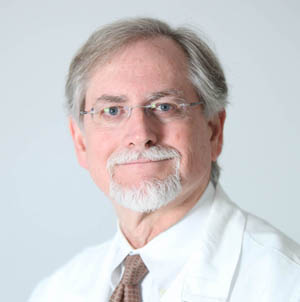Nearly 400 investigators and scientific trainees hailing from 25 different countries recently gathered virtually, across continents and time zones, to share their latest research related to the immunology of Type 1 diabetes during the 18th Immunology of Diabetes Society (IDS) Congress, co-hosted by Vanderbilt University Medical Center and the University of Florida.
Type 1 diabetes (T1D) is an autoimmune disorder caused by the erroneous destruction of insulin-producing beta cells within the pancreatic islet. It is estimated T1D affects 1.6 million Americans, with around 64,000 people diagnosed with the disorder each year. With this, improved treatments are needed and key to that goal is understanding how and why the disorder occurs.
While genetics and the environment are known to play important roles in T1D, additional underlying factors behind why the immune system mistakenly identifies beta cells as foreign are not fully understood. Because people with T1D are prone to developing other autoimmune diseases, researchers are also seeking clues to the connections between these diseases.
The three-day meeting was planned to occur in Nashville, but as international travel remained challenging due to the COVID-19 pandemic, the meeting was converted to an all-virtual format. This allowed academic and industry clinical and basic scientists, and trainees from around the world to network and plan further collaborations. Even poster sessions were productive with 95 posters presented by authors in virtual rooms which allowed interaction with attendees.

“Over the past decade, there has been an explosion of research related to the immunology and beta cell biology of Type 1 diabetes,” said Alvin Powers, MD, director of the Vanderbilt Diabetes Research Center and chief of the Division of Diabetes, Endocrinology, and Metabolism in the Department of Medicine. “This has been driven by rapid improvements in cellular imaging, improved immune receptor sequencing and single-cell profiling, extensive national and international collaborations, and a large volume of informative data from longitudinal clinical trials with large cohorts.
“As institutions with a number of investigators conducting research in these areas, Vanderbilt and Florida were well positioned to plan and lead this international meeting to understand what causes T1D and how to use this information to improve the care of individuals with T1D.”
Presentations during this year’s IDS Congress represented tangible progress toward better predicting who will eventually develop T1D, and identifying factors in T1D development, with the goal of improved prevention, earlier diagnosis, more effective treatment, and ultimately, a cure for the disease.
Among the topics presented:
- Advances in beta cell creation and transplantation that move the field one step closer toward a method capable of reversing T1D.
- Better identification of factors leading to T1D in high-risk individuals.
- An enhanced appreciation for the role of the insulin-producing cells in disease development.
- Visionary projections on how Type 1 diabetes will be treated in the next five, 10 and 20 years.
- Understanding that T1D may, in reality, result from different mechanisms depending on the age of an individual at onset.

Diane Saunders, PhD
Research to understand how the metabolism of immune T cells regulates the immune response was presented by Jeffrey Rathmell, PhD, Cornelius Vanderbilt Professor of Immunobiology and director of the Vanderbilt Center for Immunobiology. He described efforts to identify genes involved in immune cell metabolism in T1D, multiple sclerosis and asthma. He suggested that genes can be “conditionally essential” at different stages of an autoimmune disorder, and this can present new opportunities for selective therapies.
Longitudinal studies of individuals followed from birth until T1D development have discovered that islet antibodies, which predict T1D development long before symptoms appear, are detected in the first five years of life.

VUMC’s Diane Saunders, PhD, described major changes in the human pancreas and islets during this time period, including transition in islet cell composition and the presence of immune cell populations in the human pancreas.
Many VUMC faculty members played additional key roles in the meeting, with Marcela Brissova, PhD, providing a closing summary presentation, and Dan Moore, MD, PhD, as well as Saunders and Brissova, serving on the organizing committee. Postdoctoral fellow Chris Wilson, PhD, won an award for his oral abstract presentation, and graduate student Tiffany Richardson won an award for an outstanding abstract.

Mark Atkinson, PhD, director of the Diabetes Institute at the University of Florida, and meeting co-organizer with Powers, summed up his thoughts as follows: “As a Type 1 diabetes investigator of nearly four decades, I can say with confidence we have never been closer to understanding how Type 1 diabetes develops. These meetings, where scientists can interact and exchange ideas, are vital to seeing that mission accomplished.”












